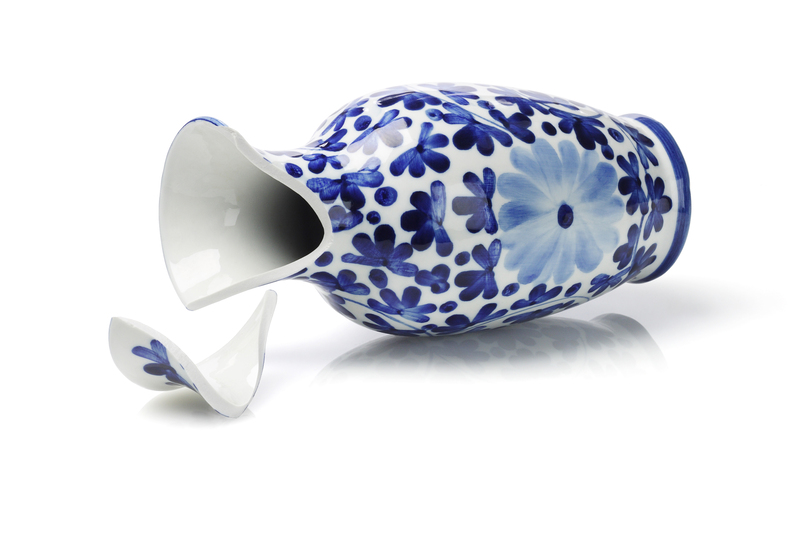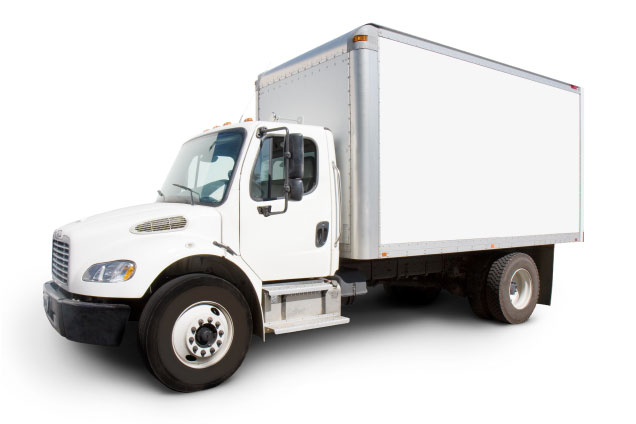Protect Your Couch: Pro Tips for Long-Term Storage
Posted on 13/06/2025
Protect Your Couch: Pro Tips for Long-Term Storage
Are you planning to store your couch for an extended period? Maybe you're moving, renovating, or simply freeing up space. No matter the reason, ensuring your sofa stays in pristine condition during long-term storage is crucial. This comprehensive guide offers expert advice for safeguarding your cherished couch during storage, so it remains comfortable and beautiful for years to come.

Why Proper Couch Storage Matters
Your couch isn't just a piece of furniture--it's a centerpiece of comfort and style in your home. Leaving it unprotected in storage exposes it to risks such as moisture, mold, pests, dust, and structural damage. Without proper precautions, you could be facing expensive cleaning, repairs, or even replacement when you bring your sofa back home.
- Avoid irreversible stains and smells
- Prevent mold, mildew, and water damage
- Stop pests from nesting or chewing through fabric and stuffing
- Protect cushions and frames from warping or sagging
Below, discover proven strategies to store your couch long-term without worrying about surprise damage upon retrieval.
Step 1: Clean Your Couch Thoroughly
Start with a Deep Clean
Before you place your sofa in storage, give it a detailed cleaning to remove dirt, crumbs, pet hair, and stains. This prevents grime from setting in and deters pests looking for food. Here's how:
- Vacuum all cushions, crevices, and under the frame.
- Wipe down and condition leather couches with an appropriate cleaner and conditioner.
- Spot-clean fabrics using a manufacturer-recommended upholstery or mild soap solution.
- Allow to dry completely before covering or storing to avoid trapped moisture.
Pro Tip: Remove all detachable cushions and clean them individually so no residue lingers.
Step 2: Prepare Your Couch for Storage
Disassemble When Possible
Breaking your couch down makes it easier to move and store and reduces the risk of structural damage. Check if your sofa allows for removal of legs, arms, pillows, or other modular components. Label all hardware and keep it in a clearly marked bag.
Wrap and Protect the Frame and Cushions
Use high-quality, breathable covers such as cotton drop cloths, moving blankets, or specialized furniture covers. Avoid plastic wraps for extended storage, as they can trap moisture and cause mold or mildew. For extra protection:
- Wrap sharp edges and corners with foam or bubble wrap to prevent dents or snags.
- Slipcover cushions individually to keep them clean and maintain their shape.
Note: If you must use a plastic cover because of damp environments, cut small holes for ventilation to prevent condensation.
Step 3: Choose the Ideal Storage Environment
Opt for a Climate-Controlled Storage Unit
Extreme temperatures and humidity are a couch's worst enemies. To best preserve your couch in storage, a climate-controlled unit is highly recommended. These units maintain stable temperatures and humidity levels, safeguarding your furniture from:
- Heat and cold that can crack leather or warp wood frames
- Excessive moisture leading to mold, mildew, and rust on builts-in metal
- Dry environments that cause fabrics to fade or wood to dry out and splinter
If climate-controlled storage is unavailable, choose an elevated spot away from exterior walls, windows, and doors, and always store your couch off the ground (using pallets or risers) to avoid accidental water exposure.
Step 4: Position Your Couch for Maximum Protection
Store Vertically or Horizontally?
Always store your couch upright as you would use it at home. While standing it on end saves space, it risks internal sagging or damaging the frame over time. Lay all cushions flat and avoid stacking heavy items on top.
- Keep off concrete floors to prevent absorption of dampness from the ground.
- Leave air space around all sides of the couch to promote airflow and reduce mold risk.
- Avoid overcrowding the unit to prevent accidental tears or pressure marks from other items.
Step 5: Safeguard Against Pests and Moisture
Reliable Pest Control
Mice, insects, and even small animals can invade your storage unit. Prevent this by:
- Sealing food and scented items out of the unit--never store crumbs or snacks on your sofa.
- Using rodent deterrents like cedar blocks, mothballs, or an all-natural pest repellent around the couch perimeter.
- Inspecting the storage unit for cracks and sealing any entry points.
Managing Moisture
Even climate-controlled units can have moisture issues. Protect your couch by:
- Placing desiccant packs or moisture absorbers under and around the furniture.
- Checking periodically for wet or musty smells (if access allows).
- Ensuring covers are breathable and never wrapping tightly in plastic.
Bonus Tip: A simple box of baking soda inside the storage unit can help control odors and moisture.
Step 6: Know What to Avoid
- Do not wrap your couch in newspaper--the ink may transfer over time and stain the upholstery.
- Never use plastic wrapping directly on cushions or leather for the long term, as this traps moisture and encourages mold growth.
- Avoid cramming your sofa in with heavy boxes or sharp objects--this can deform cushions or nick the fabric.
- Do not leave your couch unchecked for years on end if practical--you'll want to address issues quickly if they arise.
Step 7: Insurance and Inventory
Insure Your Furniture
Even with the best precautions, accidents can happen. Consider insurance coverage for stored items, either via the storage facility's policy or through your homeowner's/renter's policy. Photograph your couch before storage--it provides proof of condition in case of a future claim.
Keep a Detailed Inventory
Document the condition and any detachable parts of your sofa. Label all bags, small pieces, and hardware. This ensures reassembling your couch after storage is hassle-free, and nothing gets misplaced.
Bonus Tips for Storing Specific Couch Types
Leather Sofas
- Condition leather before storage to prevent drying and cracking.
- Avoid plastic covers--leather needs to breathe.
- Keep out of sun and intense heat that can cause fading or warping.
Fabric Sofas
- Treat with a fabric protector spray to repel stains and moisture.
- Use breathable fabric or cotton covers for full coverage.
- Check for any existing stains and treat them before storage.
Sectional and Modular Sofas
- Disassemble all sections rather than storing the unit whole.
- Store cushions and frames separately, clearly labeled.
- Take a photo of the assembled sofa for easier reassembly.
How to Retrieve and Restore Your Couch After Long-Term Storage
When the time comes to take your couch out of storage, follow these steps to bring it back to life:
- Unwrap all coverings outside or in a well-ventilated area to shake off dust.
- Air out cushions and upholstered sections for a day or two before use.
- Check for signs of pests, mildew, or lingering smells and address as needed (a steam clean refreshes most fabric sofas).
- For leather sofas, wipe down with a soft cloth and recondition with appropriate products.
- Reassemble any removed parts and consult your earlier photo inventory for a seamless process.

Frequently Asked Questions about Storing a Couch Long-Term
Can you store a couch standing on its side?
It's not recommended. Standing a sofa on its end or side can cause frame distortion and shifting of internal supports, leading to sagging or instability.
How do I keep my couch from smelling in storage?
Clean it thoroughly before storage, use moisture absorbers, and keep it covered with breathable fabric. Baking soda boxes can help absorb odors.
What is the best cover for a couch in storage?
Heavy cotton or breathable furniture covers are ideal. Avoid direct plastic contact for long-term storage unless in high humidity, and, if used, allow for ventilation.
How do I prevent pests in my storage unit?
Use pest repellents, avoid storing food, seal entry points, and regularly inspect. Cedar chips or mothballs deter most pests effectively.
Conclusion: Enjoy Your Couch for Years to Come
Storing your couch for the long term doesn't have to result in unpleasant surprises. With a little preparation, smart choices in wrapping and storage, and ongoing attention to pests and moisture, you'll keep your sofa protected during storage--ready to reclaim its place in your home at any time.
- Clean, dry, and wrap your couch with care.
- Store in a climate-controlled environment if possible.
- Use breathable coverings and avoid plastic wrap.
- Avoid stacking heavy or sharp items on your sofa.
- Use pest deterrents and moisture absorbers.
- Insure and inventory your sofa before storage.
Taking the right steps today ensures your favorite couch remains clean, comfortable, and ready to lounge on whenever you need it again. Protect your sofa during long-term storage, and enjoy years of comfort and style!





